
Herzog-Friedrich-Straße - the Central street of the old town of Innsbruck and one of the main pedestrian streets of the city center.
The street was named in honour of Frederick IV of Habsburg, as he was closely associated with the city and moved the Royal residence from Meran to Innsbruck.
Education street Herzog-Friedrich-Straße, as the basis of all of the old town, dates back to the 12th century.
Its present appearance, the street has gained in the beginning of the new time, after due to several fires of the houses, some of which were then built of wood, the building was re-erected of more durable materials like stone, and for the extension of the street space, the first floors of buildings were converted into open arches (arcades), which are often decorated with frescoes.
Thus was formed the cityscape in the style between Gothic and Renaissance (about 1500 years).
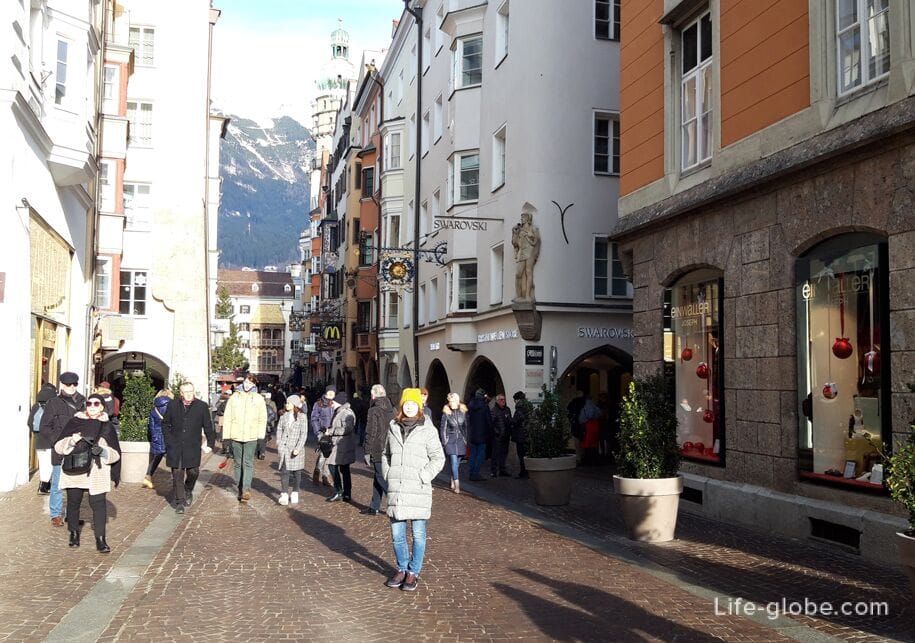
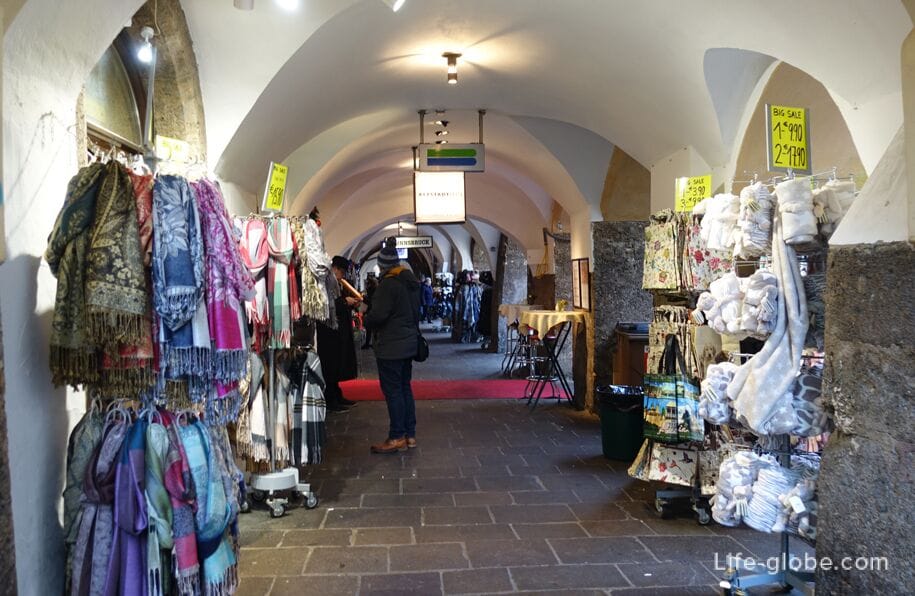
In 1972, Herzog-Friedrich-Strasse with the greater part of the old city have become a pedestrian zone.
During the history and at the present time the street was and is one of the most important in Vienna, through which passed all the traffic from the South to the bridge Was crossing the river.
Today, the Herzog-Friedrich-Strasse is a pedestrian street, which is considered the main axis and the core of the historic centre of Innsbruck. It crosses the old town leads from the bridge Inn to the East, then, the Golden roof, is bent almost at a right angle and continues to the South, where at the intersection of Marktgraben and Burggraben (former city moat) is merged with the second main street of Innsbruck - street Maria-Theresia-Strasse, a part of which also is a pedestrian zone and a continuation of the historical and tourist centre of Innsbruck. These two streets (Herzog-Friedrich-Straße and Maria-Theresia-straße) represent the main artery of the city and form around the center of the city of Innsbruck.
Along the Herzog-Friedrich-Straße close to each other are bright and elegant historic building with graceful Bay Windows and open pedestrian arcades on the first floor, under which are shops, boutiques, cafes and restaurants.
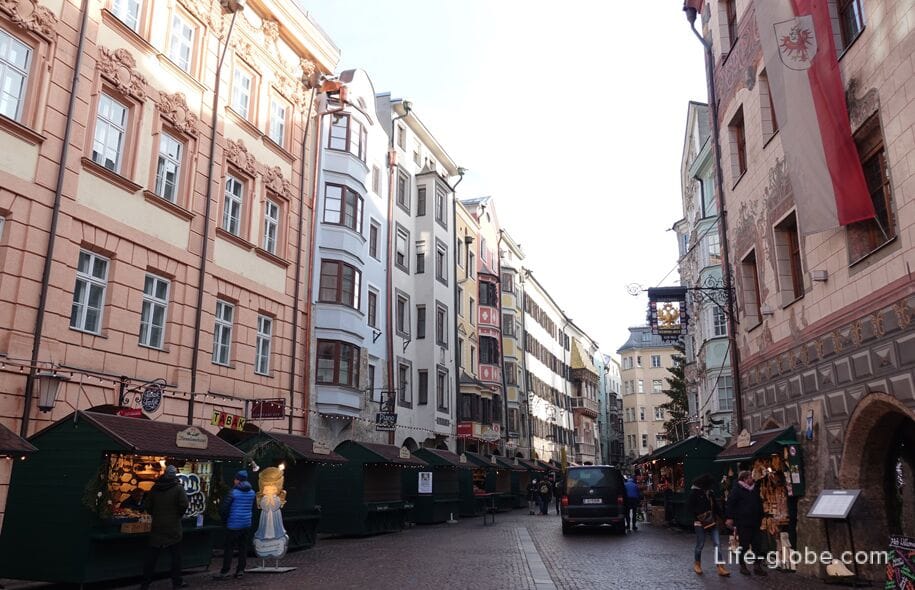
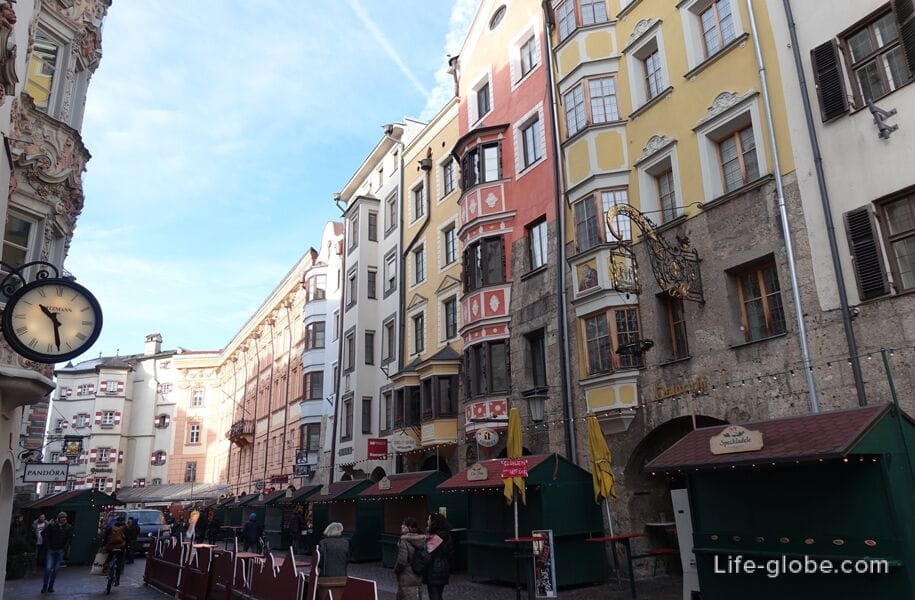
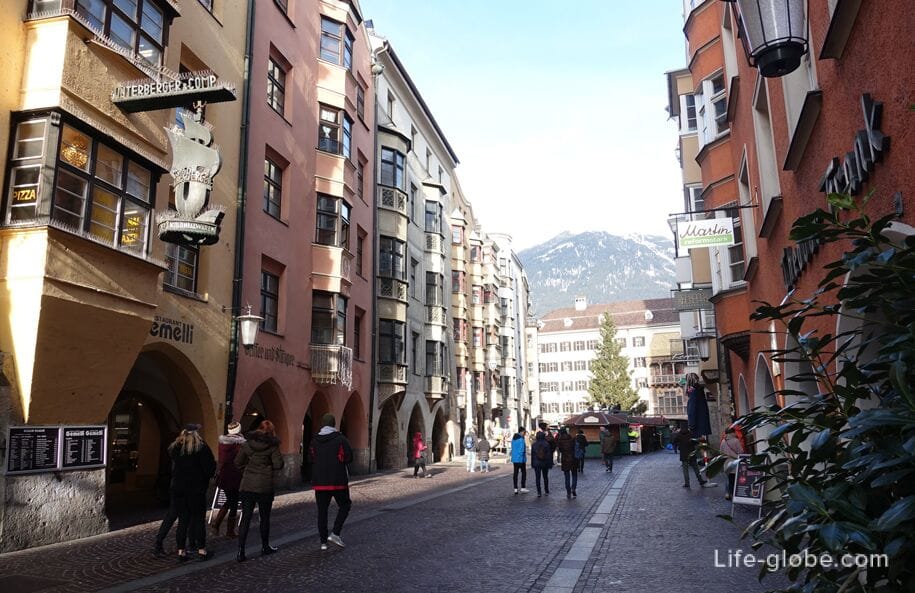
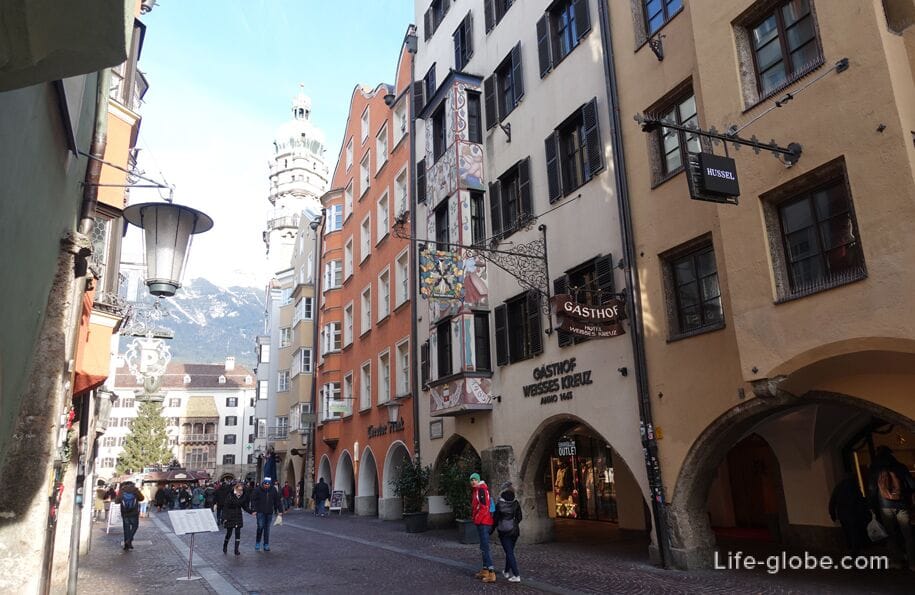
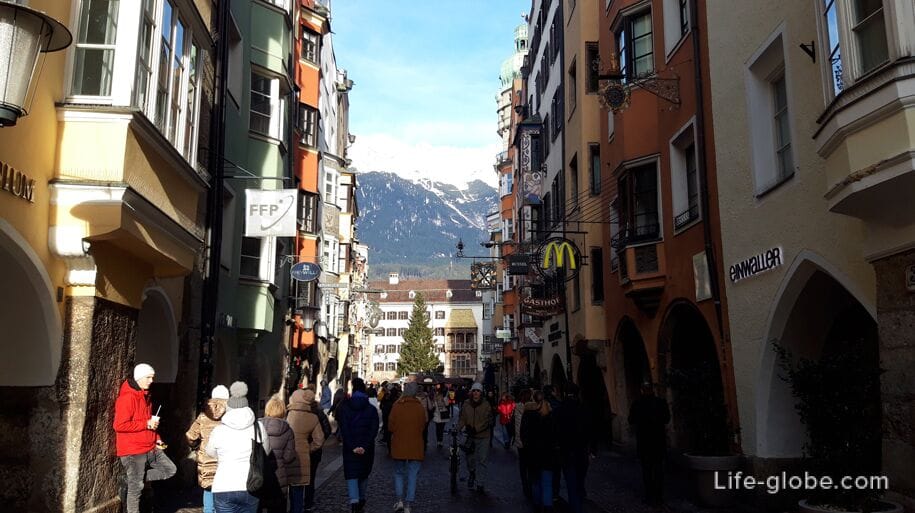
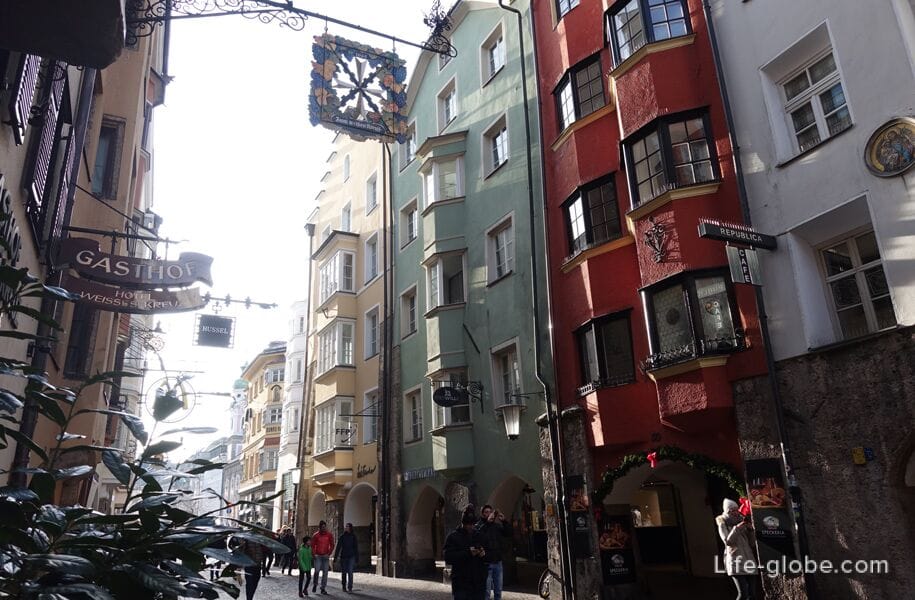
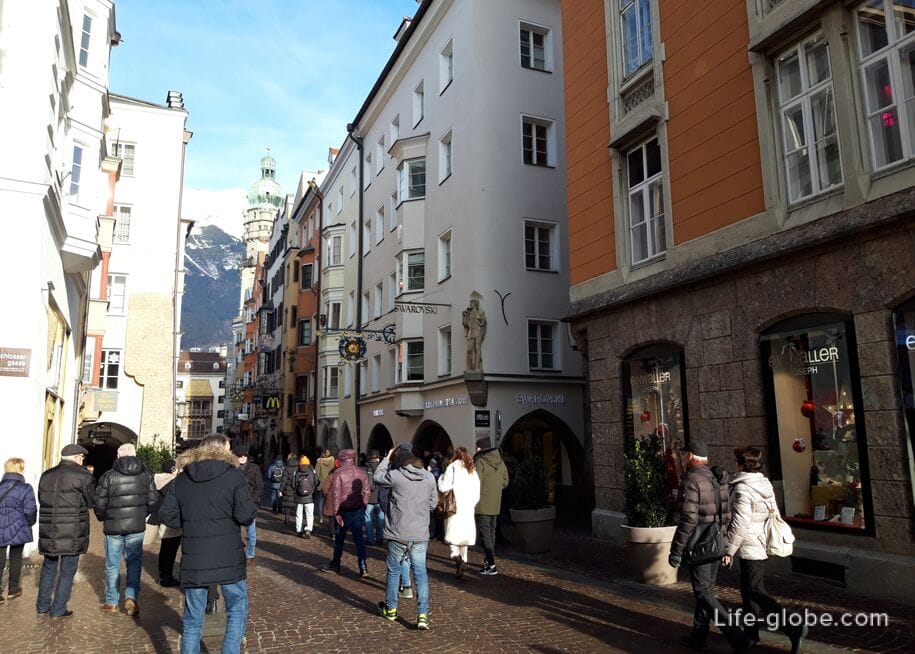


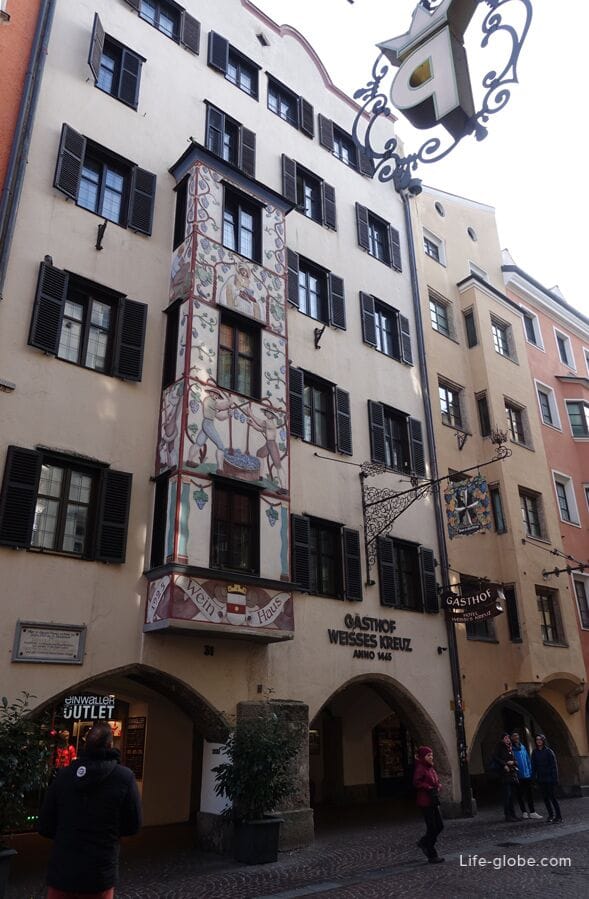
Ottoburg is a four - storey building of the late Gothic style, resembles a polygonal tower with protrusions and recesses on the facade.
The house was built on the corner of the city wall and connected with the inner gateway, demolished in 1790.
Ottoburg, which is one of the oldest buildings in Innsbruck, in its current form was built in the years 1494-1495 and expanded in 1542.
The building has a restaurant. And in front of the building from the river Was placed a monument to the "Father and son", the work of Christian Plattner.
Ottoburg located at the entrance to the old town, near the bridge Inn, at the following address: Herzog-Friedrich-Straße 1.
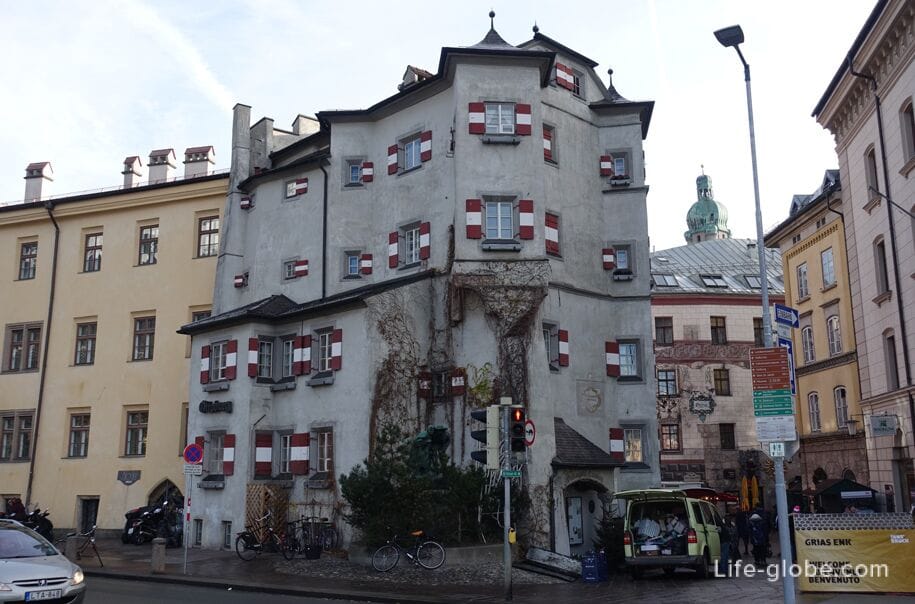
Claudian Palace - the name of the former building of the Tyrolean government, which arose as a consequence of the fact that in 1569, the Archduke Ferdinand II remade two nearby houses in the official building of the government of Upper Austria.
Destroyed after the earthquake of 1689 the house was rebuilt in the Baroque style by Johann Martin Gumpa senior.
The building is named in honor of the Princess Claudia of Medici from the Italian Royal family, who redesigned the house in the 17th century, adding the room is richly decorated with Renaissance wooden ceilings.
Claudian Palace is located at the address: Herzog-Friedrich-Straße 3.

Historical building called Gasthof Goldener Adler, is one of the oldest and without a doubt, one of the most beautiful hotels in Innsbruck, which was founded in 1390 and rebuilt after a fire in 1450.
During the history in this hotel stayed a lot of important people. Late Gothic frescoes on the façade was reconstructed between 1957 and 1964.
In this beautiful historic building is currently located 4-star hotel Goldener Adler Innsbruck with a restaurant serving Tyrolean cuisine. Link to the hotel
Gasthof Goldener Adler located at the address: Herzog-Friedrich-Straße 6.


Helblinghaus, also known as the house of Helbling is one of the most brilliant, famous, eye-catching and memorable buildings in Innsbruck.
The history of the building originates from the 15th century. Originally the house was a townhouse in the early Gothic style, like most of the surrounding buildings, but in 1725-1730 years purchased luxurious finish with stucco in Baroque - Rococo style, which can be seen now.
The architecture of the houses viewed: exquisite Bay Windows, flowers, fruit bundles, shells, masks, little angels and many other motives.
The Helbling house is located at the address: Herzog-Friedrich-Straße, 10. Read more about the house of Helbling...
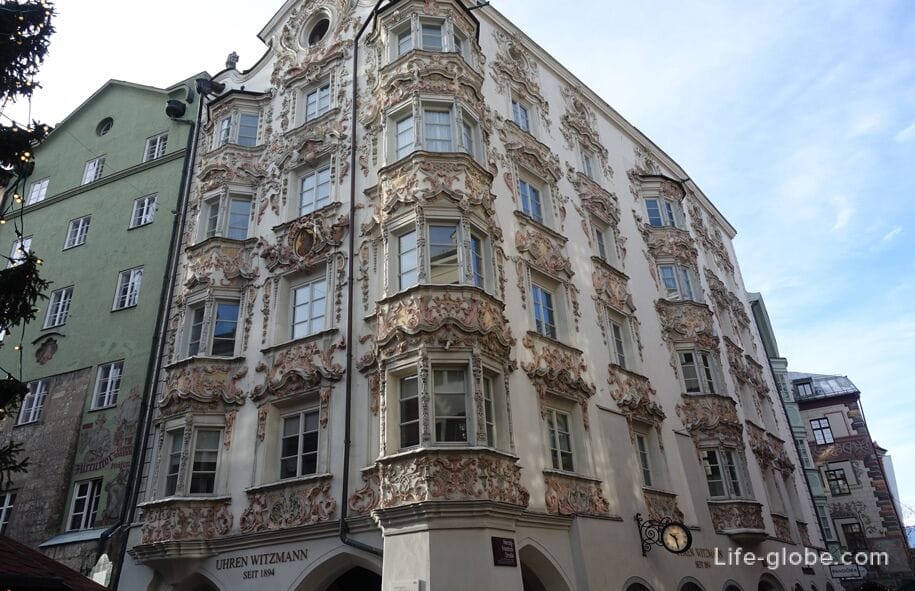
The Golden roof or simply the Golden roof of Innsbruck (Goldenes Dachl) is one of the most recognizable buildings in the city, the facade of which is a Bay window, called the "Golden roof".
The building was built in 1420 as the residence of the Tyrolean sovereigns, originally Duke Frederick IV.
When Emperor Maximilian I at the turn of the XV and XVI centuries, the house was attached to a gold Bay window in the late Gothic style with a raised "Royal balcony" ("the Royal loggia"), designed for the Imperial family. From the balcony of the nobility could comfortably observe the center of the city, as well as tournament, gala and other events held in the square.
The Bay window is covered with 2 567 gilded copper tiles, which gave the name to the Bay window - the "Golden roof". In addition, the facade of the balcony are covered with paintings and reliefs, consisting of scenes from the life of the Emperor. The reliefs depicted the coats of arms and historical events, including Maximilian I with two spouses, the Chancellor, the jester and the dancer of Morisco.
In the building with the Gold roof is currently a Museum of the Golden roof (Goldenes Dachl Museum), the exhibition which tells about the reign of Maximilian I and the history of Tyrol in the Middle ages. Full entrance ticket to the Museum costs 5 euros. Museum website: innsbruck.
The Golden roof is located at the address: Herzog-Friedrich-Straße 15. Read more about house with a Golden roof...

In the Central zone of the Herzog-Friedrich-straße, that is in front of the building with the Golden roof, the street broadened and has a shape of a rectangle. This space used to be called town square, but today has no formal name.
In this place with his "Golden balcony" Emperor Maximilian once beheld tournaments and performances. The area was also used as a venue for public speeches and rallies. On February 25, 1536, during the reign of Archduke Ferdinand, the grandson of Maximilian I, the square was publicly burned alive, the Baptist preacher, Jacob Hutter (Jakob Hutter).
In our days of the informal area is used for festivities. On the eve of Christmas and New year in the square and near such runs a large Christmas fair, and set the main Christmas tree of the city. By the way, there is a Christmas market in this location since 1973, and the Christmas tree set in front of the Golden roof of the 1930-ies. Read more about all Christmas markets in Innsbruck...
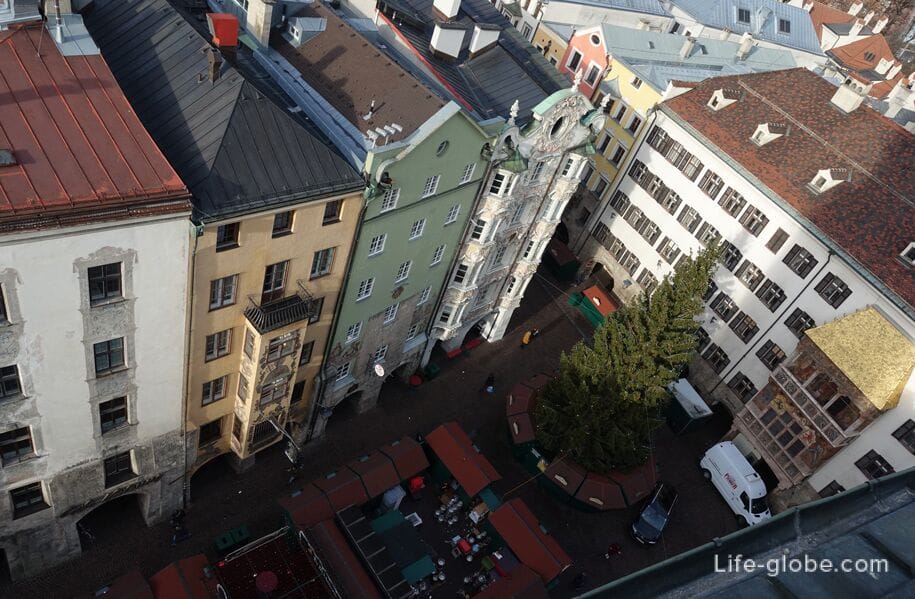
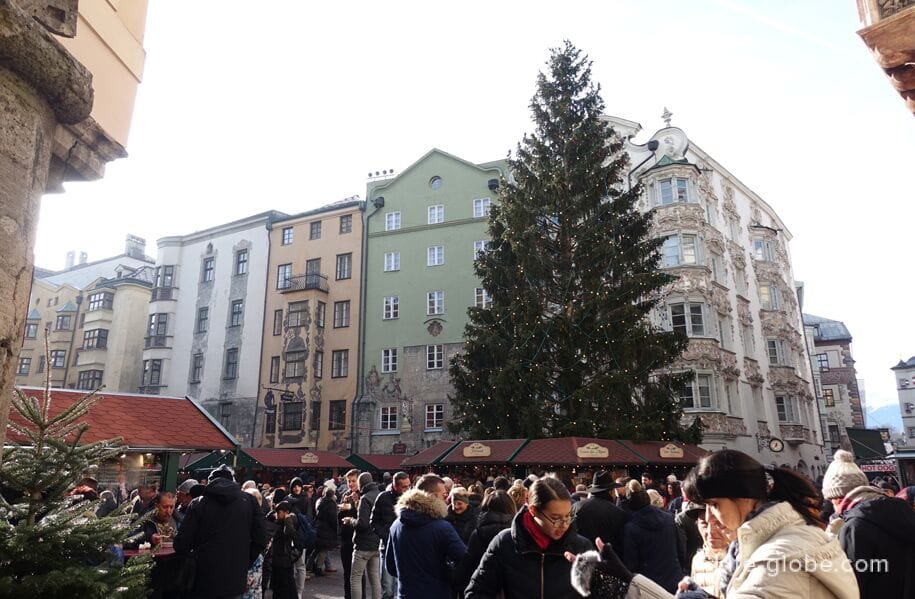

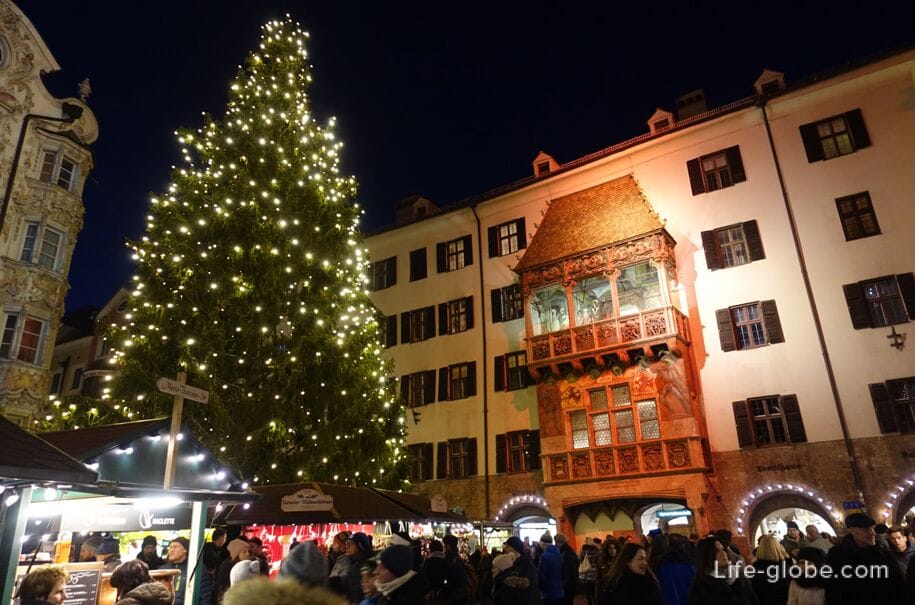
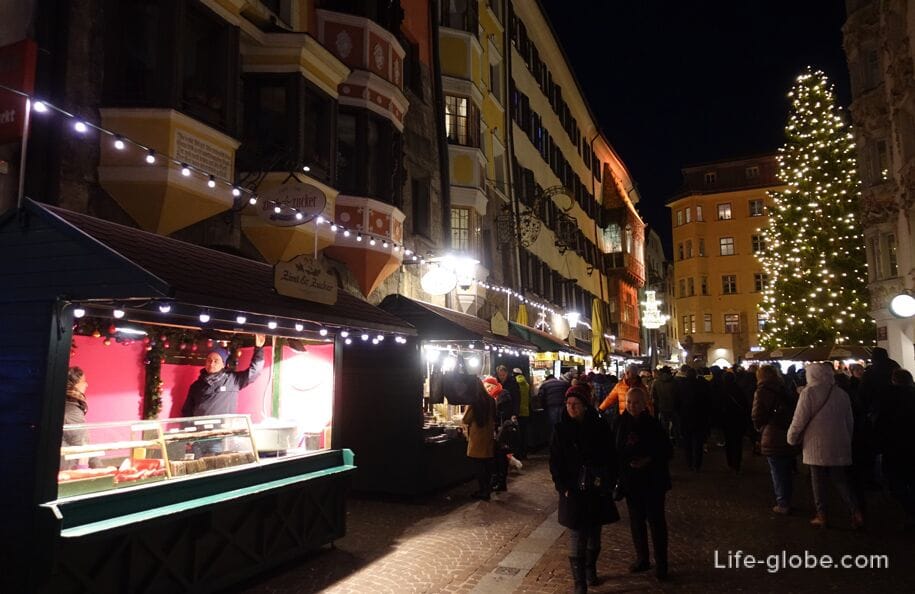
Nederlanderschap is a corner building located at the intersection of Herzog-Friedrich-straße and Hofgasse.
The history of the building dates back to the early formation of Innsbruck. On the ground floor, were found the remains of Romanesque walls.
The house belonged to the family Peterlunger since the beginning of the 19th century to 1931.
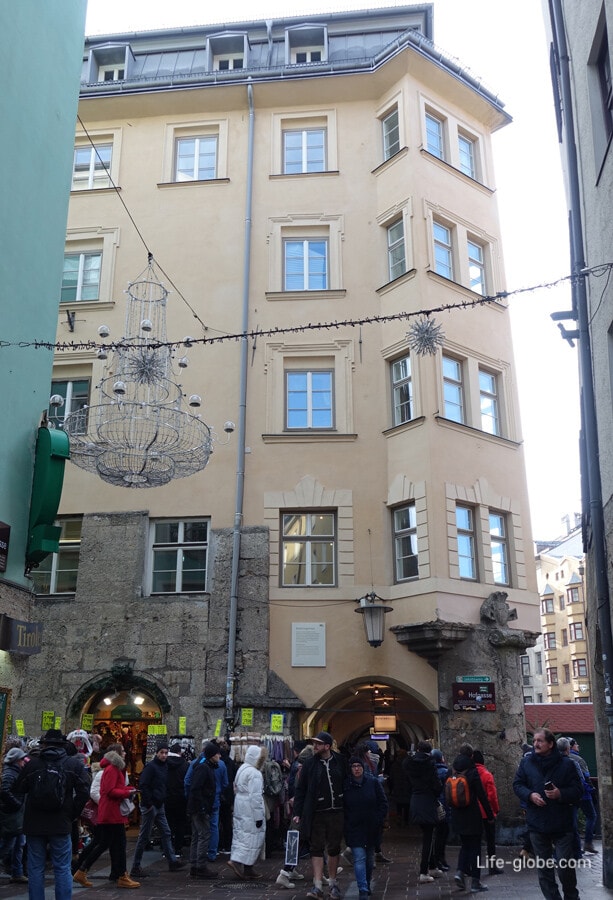
The building of the old town hall was built in 1358, and during its history has undergone several structural changes. Until 1897 the town hall was used as residence of the city authorities. On the main façade of the town hall you can see a relief of the coat of arms.
To the right side wall of the hall is adjacent to the high City tower was built between 1442 and 1450 years and in that time added to the old city hall. The tower was a lookout structure for the conduct of patrols, which was on duty hours and warned residents about fires and other impending dangers. The lower floors of the tower served as a prison.
City tower is a 51-meter height. In the upper part of the square bases of the towers are the clock tower. The first clock tower was built in 1603 by the Erasmus Melchior.
Over a three-tiered square base rises a narrower octagonal structure with four semi-circular Bay Windows, surmounted by a bathing hat Renaissance (converted in 1560).
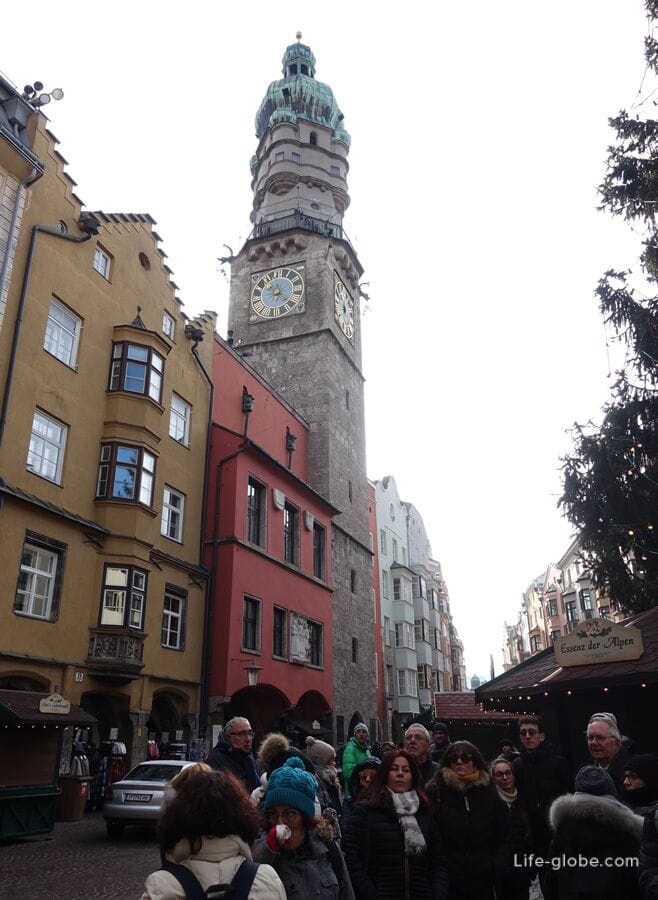
On the city tower (a height of 31 meters), between the square base and the narrower upper part is an open platform with an iron railing and mesh fencing.
The platform is a circular observation deck that gives a 360 degree view on the Innsbruck, the historic centre, the mountains and the surrounding area.
City tower is located at the address: Herzog-Friedrich-Straße 21. Read more about city tower and observation deck...
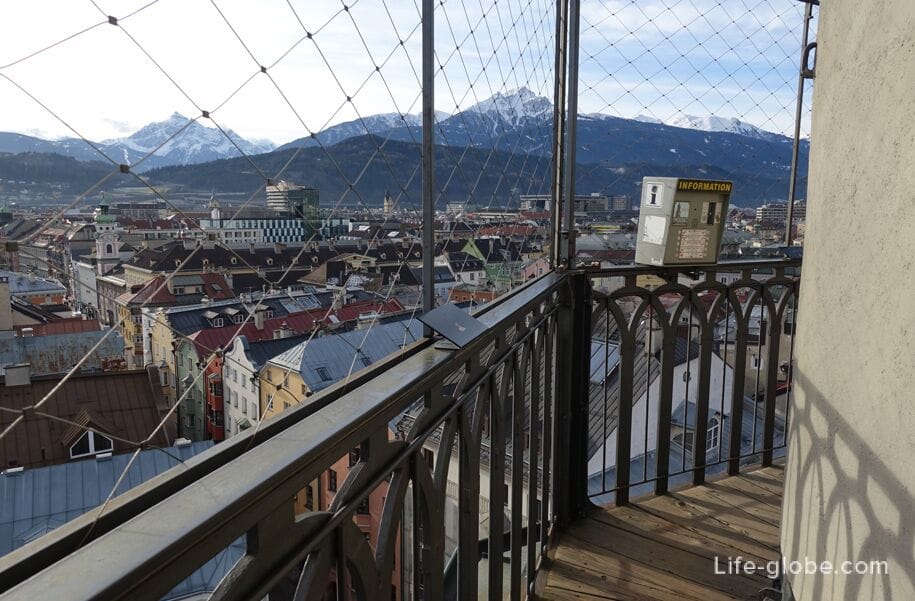
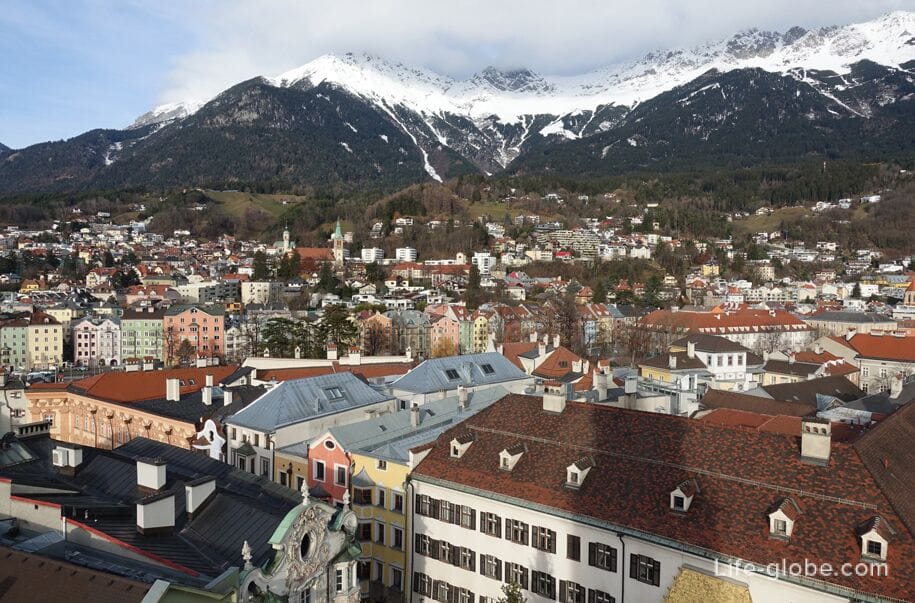
Katanggap - residential and commercial building, which was first mentioned in 1450.
The building-house is known for its Bay Windows with figured reliefs and the late Gothic façade.
The reliefs, made in the workshop of Gregor Turing, show musicians and actors of performances and several scenes of jousting tournaments held in the town square near the house with the Golden roof.
House Kazunga at the address: Herzog-Friedrich-Straße 16.

George Turing gave to the house of arch, and its current design and height, about 1541.
This house is an important example of the transition of architectural styles of the city - from the Gothic to the Renaissance.
The building is notable stone arcade on the ground floor and two rows of protruding glazed Windows. On the left Bay window are the arms of the owner Johann von Trautson (about 1507-1559.) and his wife from the family of Madruzzo.
In front of the house is a Baroque marble fountain-well.
The house of Trautson located at the address: Herzog-Friedrich-Straße 22.


The building was the first office of the Tyrolean territorial bodies (old administration building).
The building, originally designed as the hotel "Golden angel" in 1572, was acquired Tyrolean territorial authorities in 1613 and served as the administrative office of the Tyrolean Parliament as long as the new building in the new town (on Maria-Theresien-Strasse, 43) were not constructed.
In 1883, the building was purchased by the merchants of the Franks family.
Landhaus is located at the address: Herzog-Friedrich-Straße 29.


The house of the magistrate Zeller or city court magistrate.
From about 1485 in 1543, the building belonged to the world judge Zeller, a citizen of Innsbruck and his family. In the late 16th century the house was purchased by Philip lang.
The building is notable decoration of the Bay Windows.
Zeller house is located at the address: Herzog-Friedrich-Straße 35.

Commuter gate.
In the place where the road to the South left the Old walled city, up to 1765, stood the city gate, called "Gate suburb" because here began the street with urban houses outside the old town of Innsbruck. This gate was demolished as part of a planned urban regeneration on the occasion of the marriage of the later Emperor Leopold II.
Roughly on the site of the former Suburban city gates now has a four-storey yellow building. Building address: Herzog-Friedrich-Straße 40.
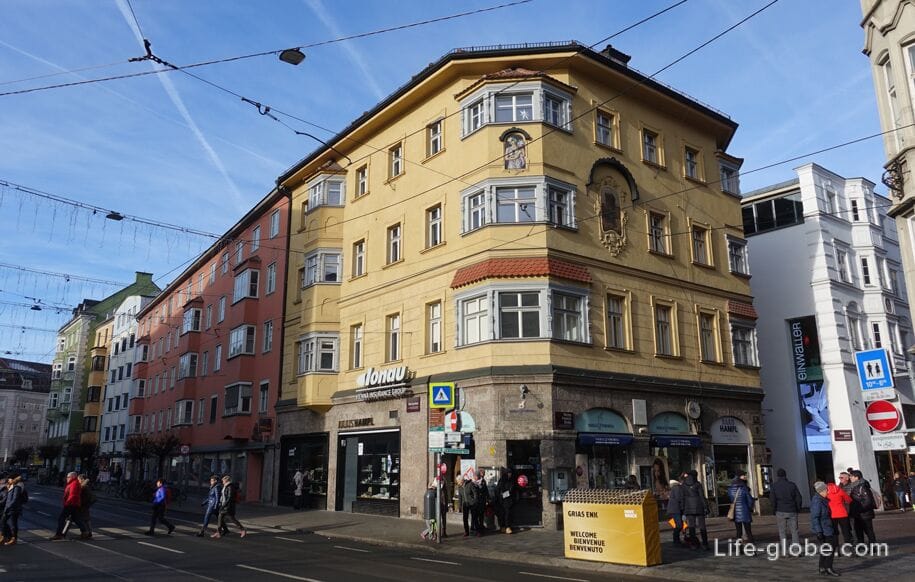
On this street, Herzog-Friedrich-straße (and the old town of Innsbruck) ends. Further, through street Marktgraben / Burggraben the Herzog-Friedrich-straße flows into the wider street - the street of Maria Theresa Strasse (Maria-Theresien-Straße), part of which is also the pedestrian zone where are located some of the important sights of Innsbruck, such as the St. Anne's column and the triumphal arch. Read more about the street of Maria Theresa...
The view of the street, the Herzog-Friedrich-Strasse, the street of Maria Theresa Strasse
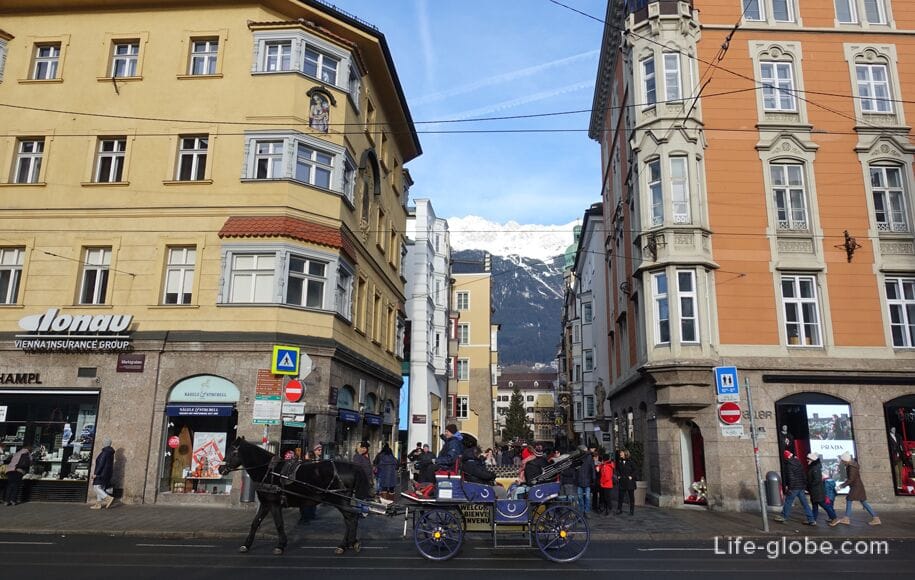
Photo of the street of Maria Theresa Strasse
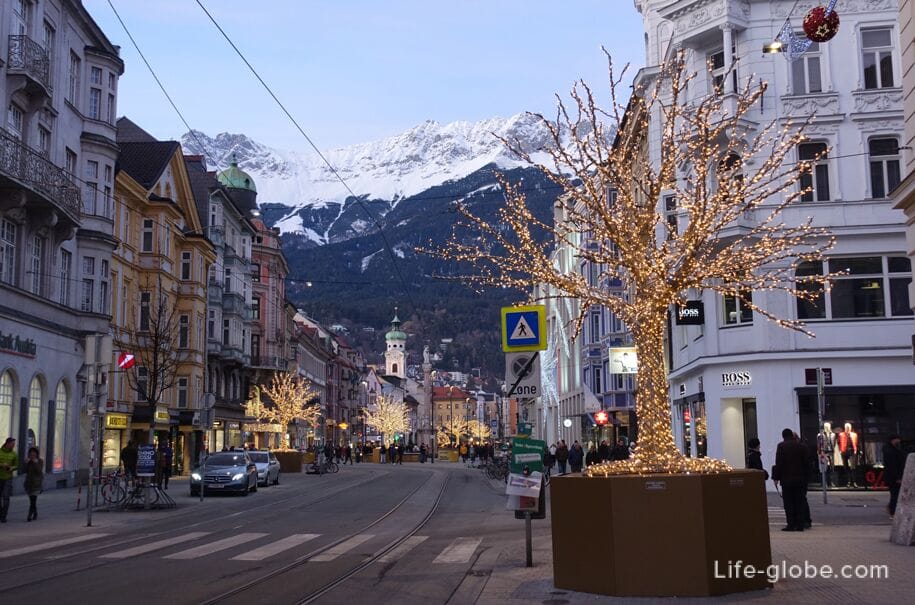
From Herzog-Friedrich-straße diverge in different directions, the secondary streets of the old town of Innsbruck.
These streets are also popular tourist routes.
Streets lined with historic buildings, among which there is significant structure. All these streets, together with street Herzog-Friedrich-Strasse, are the old town of Innsbruck.
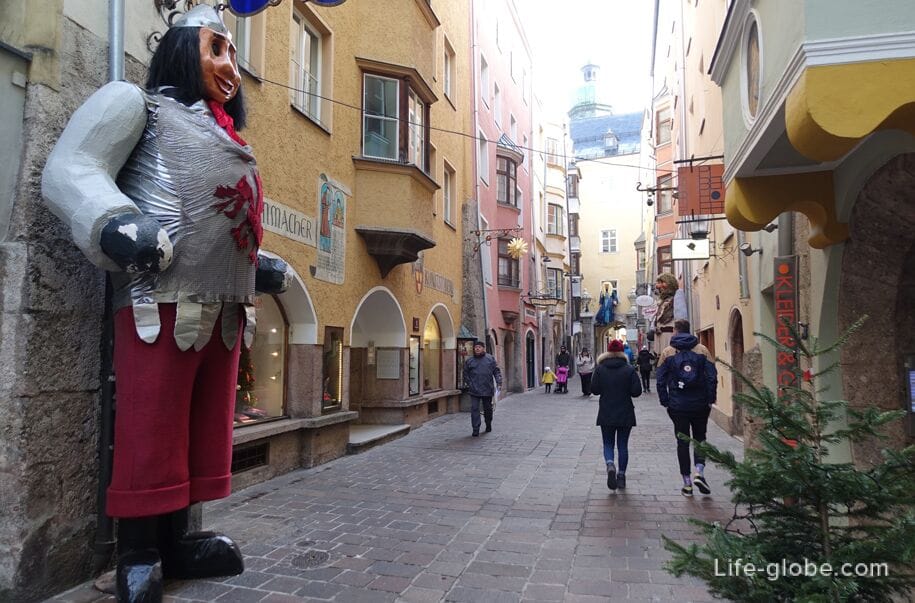
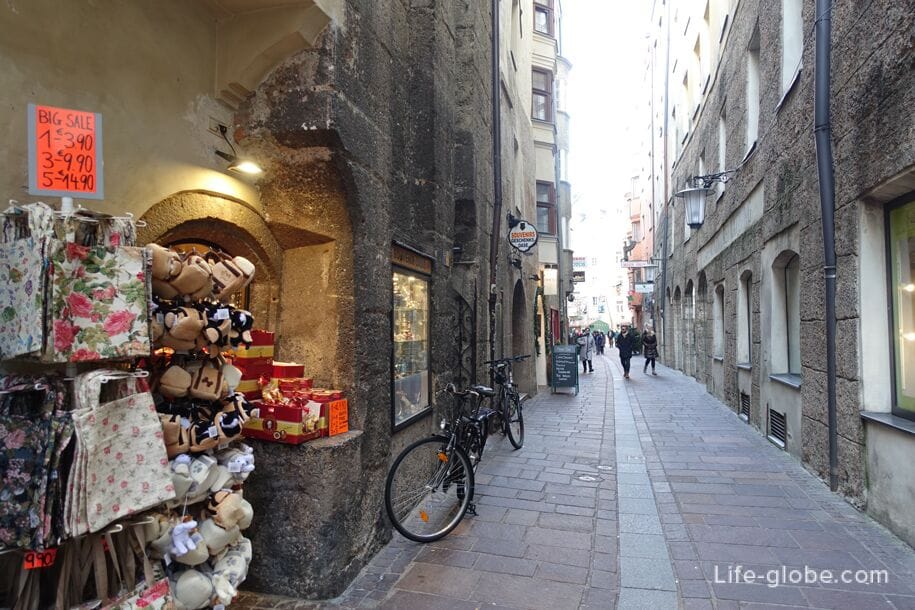
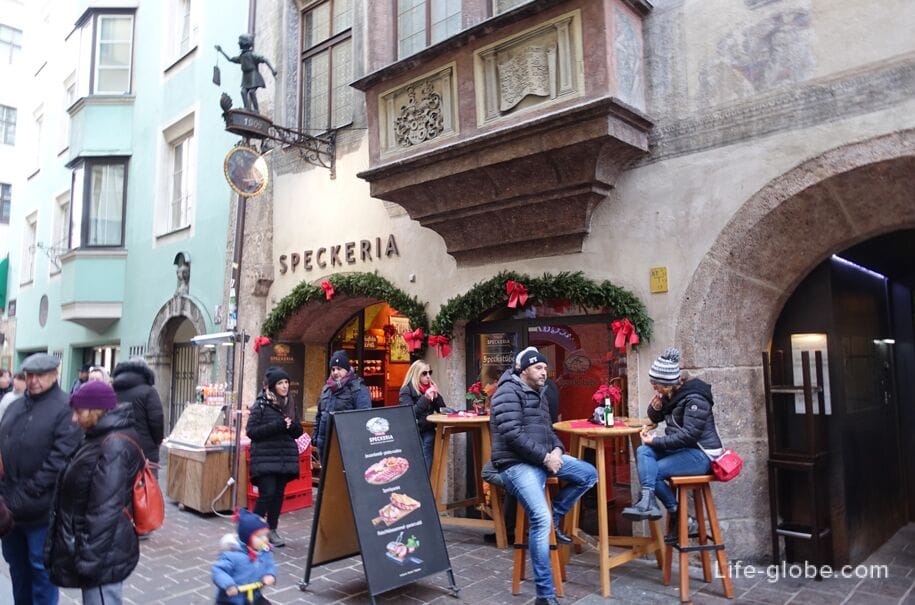
The 4-star BEST WESTERN Plus Hotel Goldener Adler Innsbruck with Parking, a bar, a restaurant where you can enjoy Tyrolean cuisine and with facilities for guests with reduced mobility
In the rooms: safe, air conditioning, free Internet access, TV with free Sky channels and a private bathroom with free toiletries.
Room rates may include Breakfast. Link to the hotel
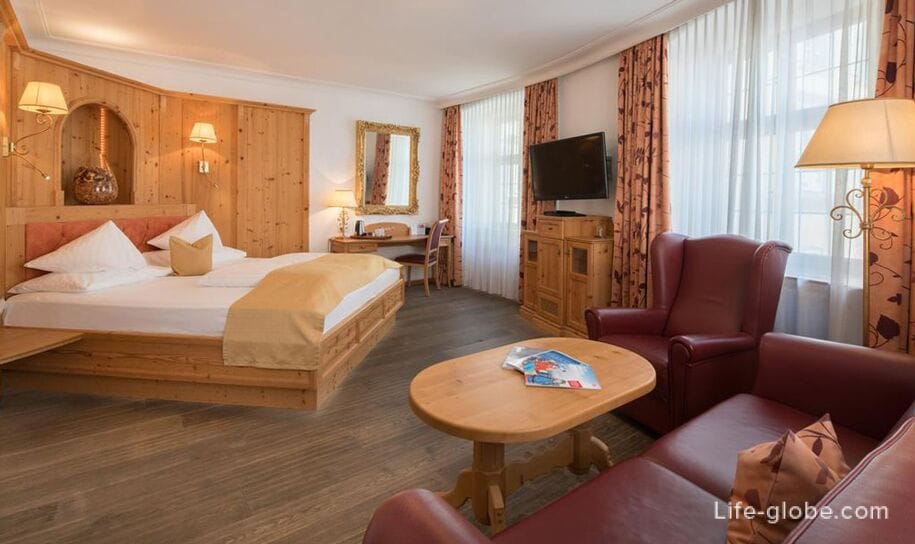
Apartments Kaiser Max Design overlooking the Golden roof, heating, free Wi-Fi, a restaurant and wine bar on site.
In the apartment: safety Deposit box, cable TV, a kitchen with crockery, Cutlery, fridge, oven, stove, dishwasher, microwave and kettle, bathroom with modern shower. The link apartments
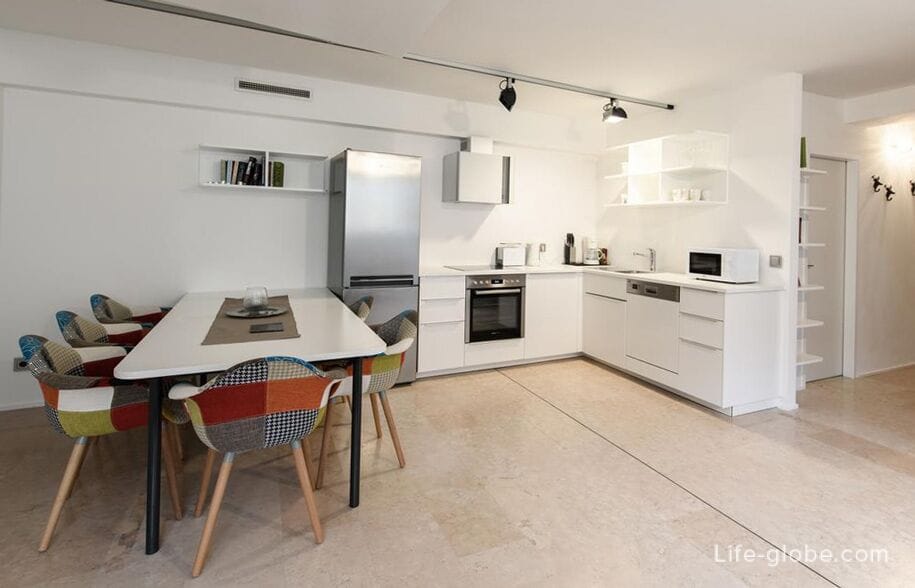
Apartments Golden Roof by Penz, located in a historical building overlooking the Golden roof and a public underground garage.
In apartment: free wifi, free ski storage, a kitchen, a flat-screen satellite TV, a Seating area with a sofa, a fully equipped kitchen and a private bathroom. The link apartments
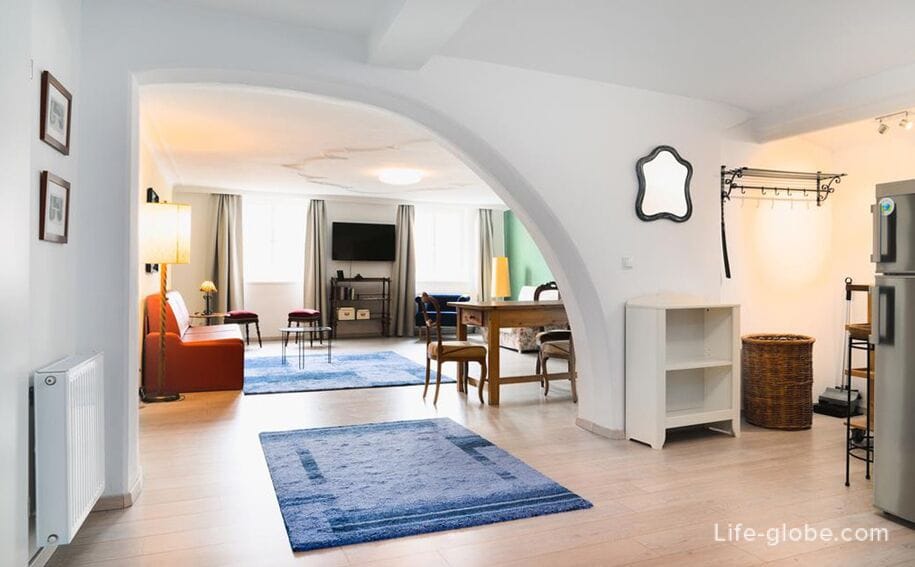
All accommodation in Innsbruck, including the old town and on the street, Herzog-Friedrich-straße, you can view and book here